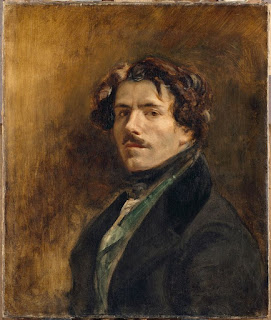New York State Museum
New York State Museum Acquires Major Collection of Artwork of the Historic Woodstock Art Colony
Birge Harrison, St. Lawrence River Sunset, no date, oil on canvas, 25 x 39 in. The Historic Woodstock Arts Colony: Arthur A. Anderson Collection
( Photo Credit: Eric R. Lapp)
Birge Harrison, St. Lawrence River Sunset, no date, oil on canvas, 25 x 39 in. The Historic Woodstock Arts Colony: Arthur A. Anderson Col
The New York State Museum on Tuesday announced the acquisition of a significant collection of artwork of the historic Woodstock Art Colony. The collection includes 1,500 paintings, works on paper, sculptures, and archival material and represents more than 170 artists from the early 20th century art colony in Woodstock, NY.
Long before the famous music event in 1969, Woodstock was home to what is considered America’s first intentional year-round arts colony: the historic Woodstock Art Colony, founded in 1902. Its artists have been the focus of collector and donor Arthur Anderson for three decades, resulting in the largest comprehensive art collection of its type. The artists in the collection reflect the diversity of the artists who came to Woodstock, including Birge Harrison, Robert Henri, George Bellows, Eugene Speicher, and Yasuo Kuniyoshi. Anderson recently donated the collection to the New York State Museum, where the collection will be transferred and permanently housed.
“The Woodstock Art Colony Collection highlights an important piece of New York’s art history with both regional and national significance,” said Board of Regents Chancellor Betty A. Rosa. “We’re honored to now own these extraordinary artworks that reflect our art and cultural history and share them with the children and adults of New York State.”
“We’re grateful to acquire this collection of historic artwork that represents the culture, history and artistic direction of the talented Woodstock artists of the 20th century,” said State Education Commissioner MaryEllen Elia. “We thank Arthur Anderson for donating this impressive collection and allowing the State Museum to share it with the people of New York.”
“The Woodstock Art Colony Collection features seminal works by some of New York and America’s influential artists of the 20th century,” said Deputy Commissioner of Cultural Education and State Museum Director Mark Schaming. “Arthur Anderson is a deeply thoughtful collector and has amassed a spectacular collection, which we are now able to share with scholars, researchers and all New Yorkers. We are deeply grateful to Mr. Anderson for his generosity and foresight in donating this exceptional collection to the State Museum. New York State has historically been a national leader in the visual arts, and the Woodstock Art Colony Collection shines a light on Woodstock as an innovative center of artistic development in New York from the early to mid-1900s.”
“Ever since I began spending quality time in the Hudson Valley, I have been enamored with the Historic Woodstock Art Colony, America’s first year-round, intentional arts colony founded in 1902,” said donor Arthur Anderson. “My legacy, study collection is a 25-year effort of research, resources, and passion. With New York State Museum as its home, New Yorkers will be able to use, learn from, and enjoy this part of New York’s history in perpetuity.”
The Woodstock story begins in 1902, when Byrdcliffe was established as a year-round artists’ colony focusing on the Arts and Crafts movement. The utopian community drew furniture craftsmen, painters, printmakers, photographers, ceramicists, and other artisans to an environment that emphasized individual work over mass production. In 1906, the Art Students League of New York, one of the country’s most important and progressive art schools, moved its summer school to Woodstock, bringing some 200 students a season to the area. The Woodstock Artists Association was founded in 1919 by artists of differing mindsets, but unified in their quest for a centralized exhibition space.
Throughout the 20th century, and now into the 21st century, Woodstock attracted and continues to attract a range of artists working in a variety of media and approaches ranging from realism to abstraction – something that sets Woodstock apart from other art colonies that flourished for a limited time and were centered on a single style.
Further information about programs and events can be obtained by calling (518) 474-5877 or visiting the Museum website at




Comments
Post a Comment
Thank you for your response
Kind regards Pierre